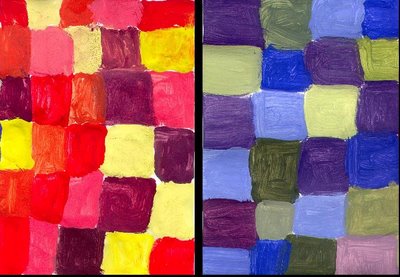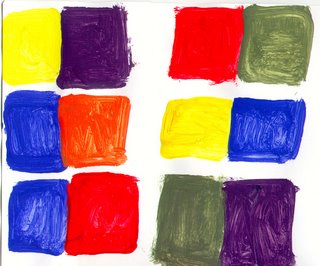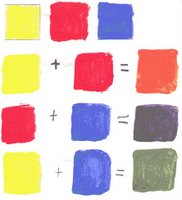from perceptual point of view, the colors are divided into two broad categories:
- warm colors : entire range from yellow to red , including red-purple fading to the
- cool colors : from green to ' blue to violet .
This division is based on psychological feelings that each color stimulates our minds, or attempt to assimilate the colors to feelings, or because, in nature, things are hot in warm colors (the fire and the sun) while things cool or cold have cool colors (water, ice, grass).
The contrast between colors hot and cold colors is always striking and born by the approach of two colors. long as we use red and green, the first and the second is hot cold, but if we close a blue and purple (which are both cold), in contrast with the blue violet is warmer.
Here's how Nicolas and Marta of III were used respectively
the table of colors and cold

the table of warm colors
do you like them too?
now already know the material you need.
Get a pencil and ruler
Draw a line to divide in half the drawing pad
Get the paints: red, yellow, white, black
On the left side of the paper, paint many red squares, yellow, orange, pink, brown
Now take the paints: blue, yellow, red, white
On the right side of the paper, paint many blue squares, blue, green, purple



